All the art and design is over. They impress our reality. Understanding them helps unexpectedly see things. This article will show you the basics. You will be familiar with the values and features of operations and procedures. Knowing these will help you to see more of the benefits of crafts. Let’s start this stupid project together! (art and design)
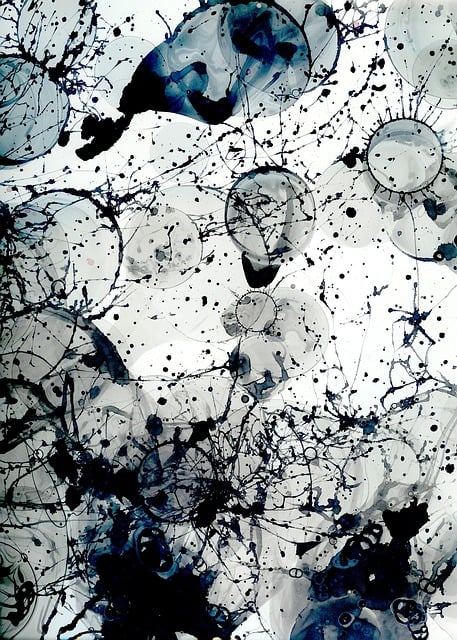
7 Principles of Art and Design
Professionals follow standards of art and design. These values help us do what is right by working hard. They guide how we use business components. (art and design)
Balance
Balance refers to everything felt, even professionally. There are two kinds of equality and distortion: Equality also means that the two sides look the same. The twisted balance means each party is unique, but they feel right.
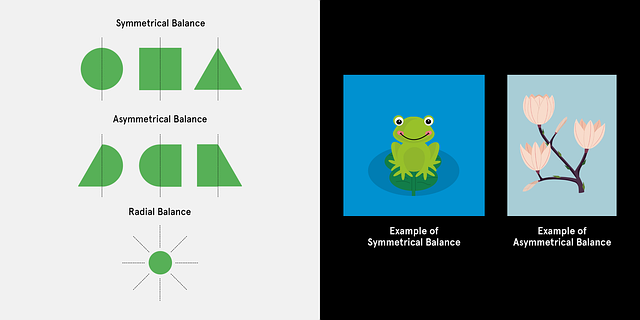
Contrast
Differences occur as the different pieces of the image emerge. This makes the craft seriously interesting. You can make it different in terms of shapes, sizes, or shapes.
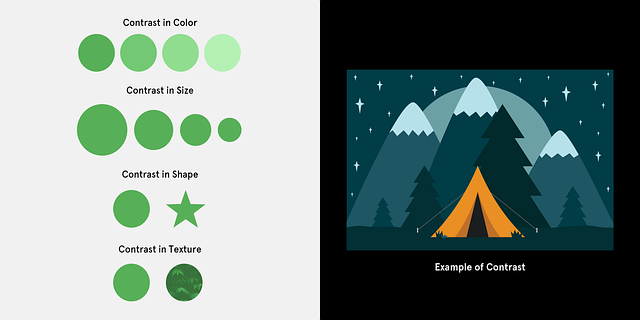
Pronunciation
Words make an image stand out more. This is the main focus of the image. Artists use accents to show what’s important.

Movement
The progression is the way your eyes move around the image. Experts use lines, shapes, and transitions to guide your eyes. This makes the craft more difficult.
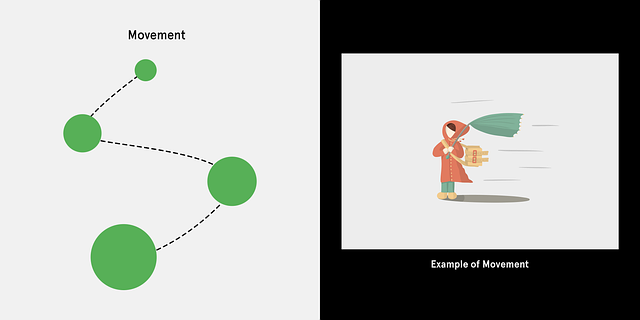
Pattern
The shape occurs when the shapes or types are repeated. The design makes the craft look cohesive. It can be basic or complex.
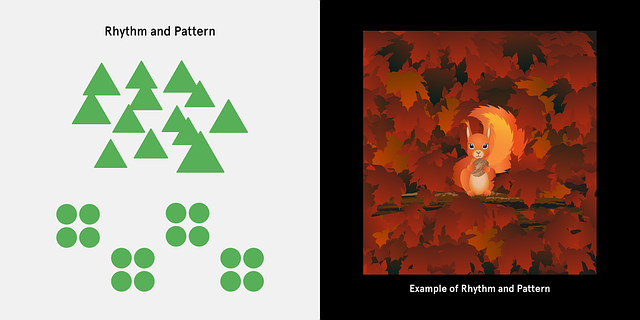
Emphasis
The sound is similar to the example but with more edge. It makes the object appear to move. The beat gives the image a coherent feel.
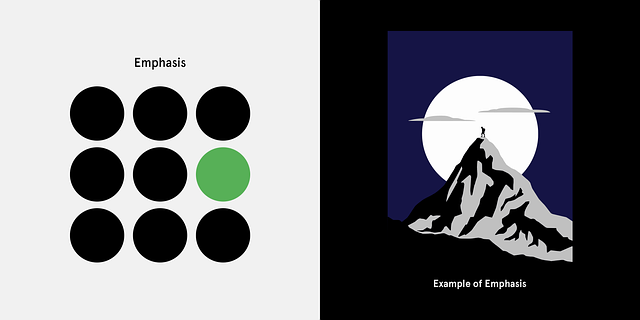
Unity
Unity means the integration of all fine arts. It makes the craft feel complete. When it all comes together, the craft becomes even more complex.

These values help artists create sophisticated and important art. They are like the fundamentals of the game. Understanding these values makes you a better artist. Remember these values when creating functionality or testing functionality.(art and design)
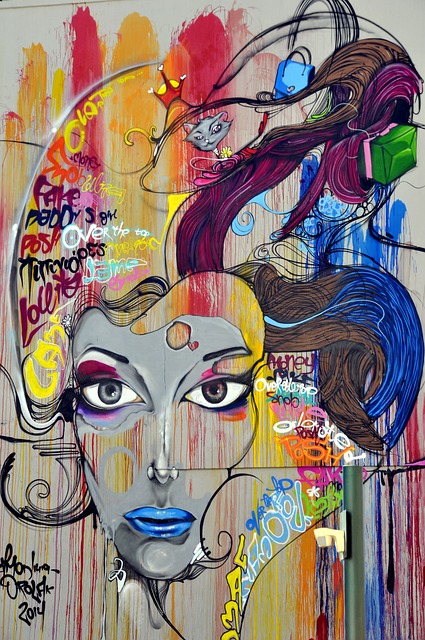
Elements of Art and Design
Elements of design and layout are the basic ingredients of art. They look like the fixings in the kitchen. We need to know about every aspect. (art and design)
Row
A line is a concept of movement between points. Lines can be straight, curved, bold or smooth. Lines can show progress and form shapes.
Shape
The dimensions are approximate lines. Shapes can be basic, like a rounded rectangle. They can also cause confusion. Large objects can be large or small. They help craft things.
Pattern
The plan is a three-story-like design. There’s level, breadth and depth. The structures can be solid, curved and vaulted. They look handy and useful.
Variety
Different things are what we see because of light. The variety can be pretty or dull. There are required tones (red, blue and yellow) and optional tones (green, orange and red). Voice can express feelings and emotions.
Set
It indicates how light or dull the value is. The properties of light are called colors. Obscure traits are called concealment. Honor supports exhibitions that are artistically distinctive and deep.
Surface
A feature is the feel or appearance of something. It can be bland, greasy, uneven, or crunchy. Artists use surfaces to make their pieces appealing.
Approach
Space is the region around and between objects in design. There is positive space (basic statistics) and negative space (position). The space seems to be carved full or empty. It also helps the show with discharge and depth.
These elements are the structural pieces of the craft. They help artists create impressive and important work. (art and design)

Composition in Art and Design
The piece shows the alignment of each part of the image. It helps to make the image more beautiful. We need to learn about good policies, standards and rules. (art and design)
The rule of one-third
The one-third standard separates gesture into nine equal parts. Experts place the critical parts on the lines or where the lines meet. This makes the craft interesting. For example, the perception of a person’s image may be on one of these lines.
Transmission lines
Drive cables guide your eyes through the process. They can be straight or bent. They help you identify important aspects of the craft. As in art, the outside can draw your eye back to the house.
Discussion area
Harmonious location is an important part of the art. It’s where you see him first. Experts distinguish where the match is by tone, shape, or detail. For example, in baby pictures, bright flowers are a harmonious place.
balance
The balance of the pieces perfects the design. Artists use perfect or distorted balance. In the artwork, for example, a prominent tree on one side and a few trees on the opposite side create a balance.
After the explanation
Presentation refers to adding features to work in conjunction with the main part. This is how I notice it. For example, trees on both sides of the road can leave a person in the middle.
Deep
The deep functioning appears to consist of three layers. Experts use shape, cover, and position to determine depth. For example, a screen with large, close objects in the foreground and a few distant objects in the background shows depth.
Straightforward things
Effort means that the gesture is clear and seamless. Experts eliminate excess details by focusing on key parts. For example, a basic cat image could no longer be supported.
contrast
One creative difference is the obvious parts of the design. Experts use all kinds of light and dull, shapes, sizes, or tones. For example, dryness on light tissue adds contrast.
Unity
Unity in design means that all parts are one. Artists use contrasting tones, shapes, or lines to create harmony. For example, a fabric with harmonious tones will appear combined.
These rules help experts make complex creations. Great piece craftsmanship and looked complete and satisfying. Where you understand these values is where you can produce and appreciate excellent work.
Comparison in Art and Design
The performance and design are comparable and yet, in addition, unique. Both use the same standards and features. How can we tell how they are very similar and how they are different? (art and design)
Cause
Patterns are meant to communicate feelings and thoughts. It shows the spirit of the artist. The system is designed to troubleshoot and help. It has a logical purpose. As much as the art is capable of conveying interest, the posture is appropriately designed.
Innovation in the field
Innovation is used in both operations and design. Experts develop new and innovative projects. Fashionistas are figuring out how best to handle matters. While the craftsman was creating a masterpiece, the programmer could create a new phone.
Standards and Features
Both art and design use the same standards and materials. Balance, contrast, accent, progression, pattern, music, and harmony are used. They recycle lines, shapes, layouts, variety, value, surface, and space. For example, both a canvas and a banner use tone and balance to make it look great.
The ability to do
Performance, in any case, is not necessarily powerful. It is designed to be tested and appreciated. The system is usually powerful. It is designed to be used. For example, a photograph is an image you are examining, while a lamp is meant to emit light.
The presentations of the
Art is a way for experts to leave. It shows their thoughts and feelings. Maintenance is the process of solving problems and making improvements. It shows us the best way to use things wisely. For example, a drawing can show the artist’s fantasies, while a grid composition makes tracking data easier.
Queue
Art can be for everyone. Many individuals appreciate it. The program is designed for a specific meeting. It addresses their issues. For example, a wall can be seen by anyone, while a logo is created for the organization and its clients.
Approach
The method of a piece of art is baseless. Artists can change their work as they go. The planning course consists of planning and organizing. The creator follows the steps to achieve a specific goal. For example, an artist can change his mind about colors, while an artist follows a pattern to create something.
These connections help us understand how art and design are interconnected and unique. Both are important and improve our reality. Knowing these differences helps you appreciate and create your art and design.
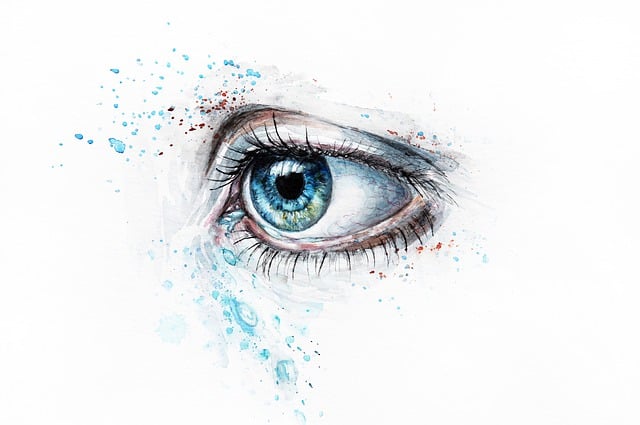
Examples of Principles and Elements in Art
Looking at the actual design helps us understand the values and features of the craft. Let’s take a look at a few well-known gestures to understand how these concepts are applied.
Bright Night, by Vincent van Gogh
- Balance: Draw a large tree to the left of the artwork and the city to the right.
- Contrast: There is a difference between the bright night light and the brightness of the stars.
- Evolution: The rotating lines on the surface create a sense of evolution.
- Contrast: Van Gogh uses striking reds and deep blues to create a vivid night scene.
- Floor: Bold colors accentuate the composition.
Mona Lisa by Leonardo da Vinci
- Pronunciation: Focus on Mona Lisa’s face, especially her eyes and smile.
- Balance: Equal space on both ends is placed perfectly on the design creation.
- Types: Leonardo uses soft, muted elements to achieve a quiet sophistication.
- Planning: Proper Planning The Mona Lisa appears to have three floors.
- Space: The base has depth, giving the appearance of a special tunnel behind it.
The incomparable wave from Kanagawa by Hokusai
- Improvements: Wave crashes and launching boats around key power centers are for show only.
- Contrast: White waves against blue water.
- Theory: The reconstructed states of the waves provide a pattern.
- Line: The wave lines are strong and clear, guiding your eyes.
- Pronunciation: The big wave is the main focus, with Mount Fuji in the background.
Scheme in red, blue and yellow by Piet Mondrian
- Balance: The artwork is replaced by rectangular shapes of varying sizes.
- Variety: Mondrian uses important tones (red, blue and purple) to add great contrast.
- Theory: Linear and rectangular layouts are examples.
- Unity: Basic sounds and shapes create the experience of putting the fabric together.
- Space: Empty spaces between rectangles create a sense of open space.
American Gothic, by Prize Wood
- Pronunciation: Two people moving forward are emphasized.
- Balance: The art is offset by a man and a woman standing next to each other.
- Variety: Variety is natural and practical, creating a serious tone.
- Superficiality: The details in their clothes and home are superficial.
- Layout: Individuals and homes have distinctive lines, creating a three-story appearance.
These examples show how designers use standards and elements to create their specialty products. By paying close attention to these famous scriptures, we learn how balance, contrast, evolution, diversity, and ideas come together. Understanding these allows us to appreciate and affirm our art.
How to Describe Composition in Art
Drawing a picture of the building helps to understand the assembly of the sculpture. We need to know how to talk about the templates.
Distinguish between the components
To begin with, take a gander at the elements such as lines, shapes, transitions, and surfaces. Describe what they see. For example, “There are a lot of bent lines in this composition.”
Look at the standards
Then consider values such as equality, difference and accent. Describe the application. For example, “The artist used exotic flowers to put out flowers.”
Discuss the context of the meeting.
Find a special craft that catches your eye. Explain why it is obvious. For example, “The big tree in the middle is the point where this image meets.”
See how the room is used.
Notice how the sculptor uses the space around the objects. Imagine what it feels like. For example, “The empty sky silences this work of art.”
Visualize the idea.
Think about how the craft makes you feel. Use words like happy, sad, calm, or relieved. For example, “the gentle variety gives this fine art a confused state of mind.”
Contrast and other arts
Compare this masterpiece with other sculptures you have seen. Discuss similarities and differences. For example, “This picture uses more transitions than any other picture we’ve seen.”
Consider the designer’s plan
Consider what the firefighter has to say or mean. Consider the purpose of this craft. For example, “The sculptor was supposed to show excellence with this bright flower.”
Illustrating the system helps us to see and understand its design. It allows us to study how experts use content and values to produce interesting and important work.

Conclusion
Nevertheless, learning about art and design values helps us realize the greatness that is all around us. By understanding how experts use balance, contrast, accent, evolution, pattern, creation, and harmony to understand things like line, shape, structure, variety, value, surface, and space the benefits of art in other ways. (art and design)
Whether it’s a painting, figure, or layout project, These criteria and overlapping elements are the structural constraints that experts use to create their art Next time you see a show-stopper consider how that shape these types together make it unique. Art is an aura of innovation, spirit and knowledge; It is a way for experts to share their thoughts and feelings with the world. (art and design)
Importance of Principles and Elements in Art and Design
It is important to understand the values and elements of performance and design. They are like the standards and tools that experts use to accomplish amazing tasks. We need to find out why it matters.
Helps Create Beautiful Art
Standards and features help professionals excel in their specialty. By using balance, contrast and values, artists can make their work seriously interesting and visually satisfying. (art and design)
It expresses feelings and thoughts
A way of sharing feelings and thoughts and gestures. Business products like Variety Line help to express these sentiments. For example, exotic sounds can convey happiness, while subtle forms of music can convey sadness.
The art makes it worth it.
Where designers make the most of standards and materials is when their specialty is most evident. Individuals can see what the sculptor is trying to say or express. This makes crafting even more important.
it allows for continuous development of power
Knowing about these standards and components helps professionals do their jobs better. They can work with strategies to achieve different effects. This makes their core business more powerful and efficient.
A person who works together
Art brings individuals together. At the point where we understand the values and features of the industry, we can discuss the craft in detail without any problems. We can express our thoughts and feelings about what we see.
It improves planning
Manufacturers also use these standards and raw materials. Great scheme things look decent and work admirably. Whether it’s banners, sites, or products, use these ideas to help make plans better.
Standards and elements of management and policy are important in the process. They help designers and fashion enthusiasts create, share and collaborate. By studying them, we can appreciate and understand the craft and plan further. Work and order make our reality more romantic and important, and knowing these values and elements helps us to appreciate its greatness more fully.
What is the Difference Between Art and Design?
The artwork and layout are comparable, yet different again. We need to consider their similarities and differences. (art and design)

Cause
They use gestures to communicate feelings and ideas. It shows the spirit of the artist. The system is designed to troubleshoot and help. It has a logical purpose. As much as the art is capable of conveying interest, the posture is appropriately designed.
The ability to do
Manual work does not necessarily require the ability to work in all contexts. It is designed to be tested and enjoyed and generally has the ability to set up. It is designed to be used. For example, a model is a piece of art you are exploring, while a lamp is meant to emit light.
The presentations of the
Art is a way for experts to leave. It shows their thoughts and feelings. Maintenance is a way of solving problems and improving things. It shows us the best way to use things wisely. For example, a drawing can show the artist’s fantasies, while a grid composition makes tracking data easier.
Innovation
Both art and design use innovation. Craftsmen are another singular profession. Promoters consider best practices for handling issues. For example, a firefighter would set up clear furniture, while a programmer might design a new phone.
Approach
The method of a piece of art is baseless. Artists can change their work as they go. The planning course consists of planning and organizing. Fashionistas pursue goals. For example, the artist could vary his ideas about colors, while the designer followed a creative process.
Audience
Art can be for everyone. Many individuals may well appreciate it. Specific meetings are scheduled. It addresses their issues. For example, a wall can be seen by anyone, while a logo is created for the organization and its clients.
Standards and features
Both art and design use the same standards and materials. They use balance, contrast, rhythm, progression, pattern, rhythm, and harmony. They recycle lines, shapes, layouts, variety, value, surface, and space. Artwork and banners, for example, use tone and balance to make it more attractive.
Knowing the difference between design and planning helps us understand and appreciate both. Each plays an important role in our reality. Art makes us feel and think. Planning helps us solve problems and improve things. Together they make our lives happy and helpful. (art and design)

How to Use the Principles and Elements in Your Art
The use of standards and aspects of the craft contribute to creating a sophisticated and interesting piece of art. Here are a few tips to help you implement it.
Start with lines and shapes.
Start your artistic beauty by defining boundaries and shapes. Create effects with straight lines or worm fibers. Combine rectilinear shapes such as circles, triangles and rectangles to create your design.
Choose your qualities carefully.
Choose colors that match your mood or message. Use amazing runs to convey satisfaction and dull ones to convey difficulty. Be sure to mix important tones (red, blue and yellow) to create additional variety.
Add the Surface
Think about how it feels. Use different devices to create a page. For example, you can use a thick brush for a smooth surface or a smooth brush for a smooth surface.
Play with the space.
Think about how to incorporate objects into your fine art. Use a good location for core subjects and a negative space for the foundation. This adds depth and makes your feature seem more complete.
Balance your belongings
Make sure your art feels perfect. Set things up for balance. For example, if you draw a tree that stands out on one side, add something on the opposite side to keep it going.
Make a difference
Use the contrast to make parts of your art stand out from the background. Put lowercase letters closer to gentle types, or uppercase letters closer to larger ones. This makes you basically seriously interesting.
It focuses on the main idea
End with what the main part of your art is. Make it a harmonious place by using dramatic tones, big shapes, or lots of little details. This helps individuals know where to look first.
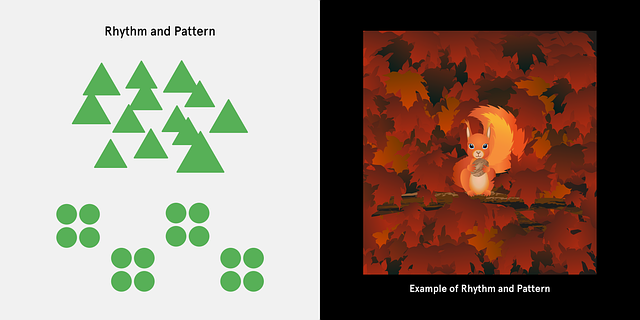
Use patterns and rhythm.
Rehash shapes, lines, or variations for design. This will make your feature look more cohesive and interesting. Use rhythm to rehash elements fresh with slight adjustments to show evolution.
Putting everything together
Make sure all the pieces of your artwork work together. Use comparable tone, shape, or spelling to create harmony. This will make your feature look fuller and more coherent.
You can use these tips to make delicious and important crafts. Work around the standards and materials, and you’ll soon find your craft has reached the next level. Keep in mind, that the key is to have fun and share your ideas!
7 Principles of Art in Famous Artworks
Looking at the craft values in popular art helps us understand how it works. We need to look at paintings from famous artists.
- Balance Leonardo da Vinci’s The Last Dinner
In this design, Jesus is in the center, with worshipers on either side. This perfect balance gives the artwork a sense of harmony and unity. They adjust the sessions, keeping the sessions consistent.
- Differences in Rembrandt’s The Night Watch
This painting uses light and passivity to contrast. While the main characters are brilliantly lit, the references are obscure. This does not include outstanding individuals.
- Edward Chomp’s pronunciation in The Shout
In this artwork, the central figure is the symmetrical point. The swirling lines and beautiful transitions around the painting make it visible. The sculptor uses vocabulary to identify important energetic areas for the shout.
- Development in Brilliant Night by Vincent van Gogh
The swirling sky in Brilliant Night signifies evolution. The dashed lines guide your eye around the canvas. The stars and moons seem to fly through the night sky.
- Theory in The Incomparable Wave Off Kanagawa by Hokusai
It is an example of the waves that are crashing back in this fine art. Situations with waves and boats add to the mood. A wave pattern makes the image sharp and energetic.
- Views in tubes by Claude Monet
In this composition, Monet reconfigures the shape of the lily cushion and flower. Each lily cushion is something different, and plays music. Rehashing sizes has a quiet quality.
- The solidarity of the Salvadoran movement in The Tirelessness of Memory
This masterpiece uses contrasting shapes and sizes to create harmony. Melting timers and the fantasy scene all work together. The unity makes the art look like a whole world of sanction.
These examples illustrate how performance standards make crafting attractive and powerful. By focusing on these famous pieces, we learn to use balance, contrast, accent, progression, pattern, mood, and harmony. This helps us achieve and makes the craft more valuable.
The Importance of Learning Art Principles and Elements
It is important to know the standards of performance and materials. It helps us in many ways. How do we find their valuable meanings?
- Performance improves
Knowing the standards and features helps us be more efficient. We explore how to use lines, transitions, and shapes to make it better in our fine art. It makes our main course appealing and interesting.
- It helps us understand craft
Where we know the values and features is when we can better understand the craft of others. We can see what the sculptor is trying to show. It makes manual efforts silly and even more expensive.
- It further enhances cognitive thinking.
Learning about crafts helps us come up with creative ideas. We can mix and match different elements with values to create something unique. It further sustains our innovation.
- Builds capabilities
Applying standards and components improves us as experts. We excel in design, design, and programming. It helps us to gradually continue to improve in our abilities.
- He talks about emotions
Art is a way to express our feelings and thoughts. We can communicate how we feel by using transitions, lines and shapes. It helps us to share our feelings with others.
- Prevent issues
Fashionistas use craft standards and materials to nurture the themes. They are helpful and wonderful. Learning how to craft helps us think about a bigger plan.
- It socializes the person
Art brings individuals together. The place where we share our craft is the place where we connect with others. Art education helps us expand and share our horizons.
- It gives us satisfaction
It can end us with craftsmanship. It’s silly and slackening-action. Knowing the standards and elements makes the art more appealing.
In the rundown, it is important to know the standards and features of the craft. It helps us create, understand and appreciate business. It makes us more innovative and talented. Art is a wonderful way to post and communicate. In this way, we must continue to learn and practice the craft!
Using Principles and Elements in Everyday Life
We can apply the craft standards and elements in craft classes and still in our daily lives. How do we find it?
- Planning your room
When designing your room, you can use balance and variety. Keep the furniture and decor in balance. Use colors that you like and that match well. This will make your room look and feel good.
- Clothing choice
At the point of choosing clothes, you can consider contrasts and patterns. Wear contrasting colors, such as a light shirt with skinny jeans. Choose a patterned fabric such as stripes or stripes. This helps you stay sharp.
- Food processing and covering
When cooking, you can use a variety of sizes and shapes. Ceramics can be shaped into different and interesting shapes. Arrange your food on the plate in the right order. Use amazing garnishes to make your dinner look mouth-wateringly satisfying.
- Created artifacts
For every time you’re playing, use the surface and setting. Choose materials that have a unique vibe, like smooth paper and bold textures. Arrange your art so that it is interesting and interesting. This gives your art a boost.
- Photography
At the photo shoot, consider accent and development. Focus on the main subject of your photo, like a smiling partner. Use lines and shapes off the screen to guide the viewer’s eyes. This will give your picture a complete look.
- Storytelling
When creating a story, you can use music and harmony. Throw specific ideas or words in the background to illustrate. Make sure all parts of your story work together. This makes your article worth reading.
- Plan of the nursery
Whenever designing the nursery, use space and balance. Keep the plants in such a way that everyone has room to grow. Balance small tall plants to keep the greenhouse balanced. Use a variety of flowers and flowers to make it look lovely.
- Execution of rights
Use contrasts and patterns in the area where you place the group. Enhance the outdoors with bright colors. Use designs like polka dots or stripes for your beauty. This will make your celebration look more fun and exciting.
- Activity Planning
During the process of working on a system, use each criteria and component. Make sure you do it well and perform admirably. Whether it’s school work or your own, use these ideas to help with everything you do.
Nevertheless, the values and elements of craft can be applied to many aspects of our lives. They help us keep things beautiful, efficient, and fun. We can use these ideas to make our daily lives more sophisticated and interesting. (art and design)
Exploring Art in Different Cultures
Crafts are different everywhere. Every culture has a unique way of making images. We need to examine craft in different countries and understand how those values and components are applied.
- African crafts
African entrepreneurship often employs complex concepts and sophisticated variations. The larger number represents individuals, animals, and nature. The designs are important. Used in textures, ceramics and coverings. African masters use balance and rhythm to create interesting arrangements.
- Asian crafts
Asian art includes works from countries such as China, Japan and India. It is rich in nature, such as mountains, flowers, and animals. Chinese art uses light and dark colors to create contrast. Japanese workmanship has lines and shapes that are straightforward to taste. Indian design is known for its intricate designs and dynamic tones.
- European Industry
European design has a long history with many famous masters. During the Renaissance, artists like Leonardo da Vinci used balance and imagination to create masterpieces. The use of contrast and progression in sophisticated art created stunning situations. Current European work explores recent styles and ideas.
- Local American crafts
Local American crafts include stoneware, perimeter fences and floral arrangements. A large number refers to nature, spirits and nature. Examples and illustrations are important. They tell stories and teach rituals. Designers use collaboration and patterning to create important systems.
- Marine Structures
Pacific islands Australia, New Zealand and Hawaii crafts often have permanent products. Painted wood, thermal panels and tattoos abound. The systems use shapes and lines to address the sea, land, and ancestors. Nautical design uses balance and balance.
- Latin American Industry
Latin American crafts are healthy and bright. Includes images, objects and samples. The large number represents the individual, his or her history, and their culture. Experts use tone and contrast to make their work interesting and expressive. Mexican sculptor Frida Kahlo uses vocabulary to express emotion in her art.
- Center Eastern Architecture
Center East sculpture is known for its multidimensional structures and patterns. Islamic craft uses mathematical formulas and calligraphy. Experts create balance and cohesion by re-hashing systems. Persian beds and frames are known for nitty gritty brilliant design.
- Inuit Industry
Inuit art from the cold includes painting, calligraphy and sculpture. Animals like whales, elephants and seals often make the designs. Permanency has a profound effect. Inuit experts use structure and surface to create similar and expressive pieces.
- South Asian Architecture
South Asian crafts, including crafts from countries such as Thailand, Cambodia and Indonesia, emphasize shrines, carvings and objects. A great number reflect divine mythology and nature. Artists use progression and patterning to retell stories and complete their work.
- Caribbean Industry
Caribbean crafts are diverse and multicultural. Includes composition, singing and dancing. Experts use dramatic and spiritual examples to convey the joyful and dynamic nature of island life. Balance and musical balance in both visual presentation and execution is important.
Exploring the handicrafts of different countries helps us to appreciate all the variety and products on the planet. Each culture incorporates aspects of values and craftsmanship in unique ways. By studying the arts of expression, we can appreciate the magnitude and importance of the fine arts.
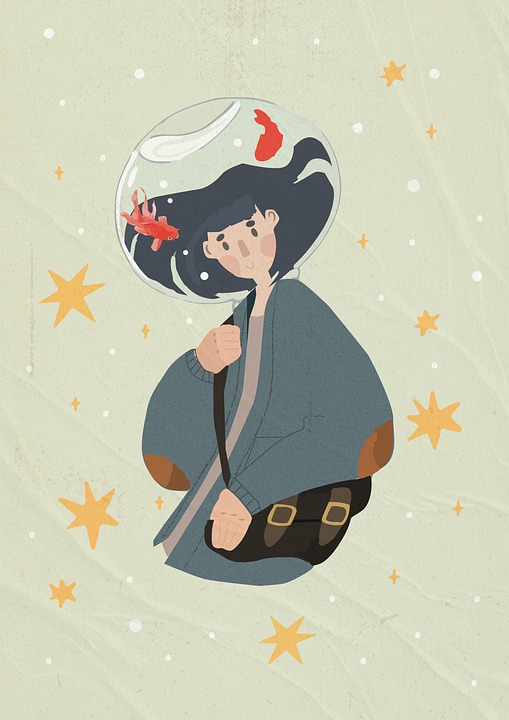
Creating Your Own Artwork Using Principles and Elements
Creating your feature is fun and refreshing. You can use performance and product standards to help. Here are a few steps to creating a masterpiece.
- Design your feature.
Determine what you need to build. Will it be a painting, a painting, or a painting? Can you put what you need to disclose? I think how you manage it helps you in the beginning.
- Choose your content.
Select the tool of your choice. You can use pencil, paint, paper, or land. Choose a tone and content that matches your mood. Save everything before you start.
- Start with lines and shapes.
Start by defining boundaries and sizes. Use straight, bent, or horizontal lines. Combine straightforward shapes like circles, triangles, rectangles, and more. This provides the necessary framework for your artwork.
- Add Tones
Choose colors that match your mood. Use dramatic tones for happy emotions and gloomy tones for sad ones. Shuffle notes to create new ones. The variety adds life to your masterpiece.
- Do the background
Think about how it feels. Add a surface to your feature. Use machines to make bland, greasy, or uneven surfaces. The top makes your art seriously interesting.
- Choir lounge
Choose your specific storage location. Use positive space for the basics and negative space for the foundation. Make sure everything fits properly. This will give the impression that your style has been adjusted.
- Add subtle details
It highlights the important aspects. Add nuances to make it stand out. Use small lines, shapes, or transitions. The little things make your art unique.
- Check the balance.
Take a gander at your craft and see if it looks perfect. Make sure things are set up so that they look adjusted. If one side seems too heavy, add something to the opposite side. Balance encourages your primary activity.
- Use contrast
Use contrast to make parts of your image stand out. Put a lighter line near the slower type. Use sizes close to sizes. The contrast keeps the viewer’s attention.
- Make an example.
Add lines, shapes, or repeated hashes of shapes. The designs will make your art look cohesive and interesting. Make some changes to rehash the components and present the musicality to the evolution.
- Check for unity.
Make sure you have all the masterpieces together. Use transitions, shapes, or comparable lines to create harmony. Unity makes your feature look complete and approved.
- Audit is terminated
Look at your art one last time. Roll up the last achievement for its new achievement. By the time you’re satisfied with your art, you’re done!
By following these tools, you can create your own masterpiece. Can you make sure you use craft standards and materials? They help you excel in your particular and express yourself. Above all, have a great time and enjoy the build! (art and design)
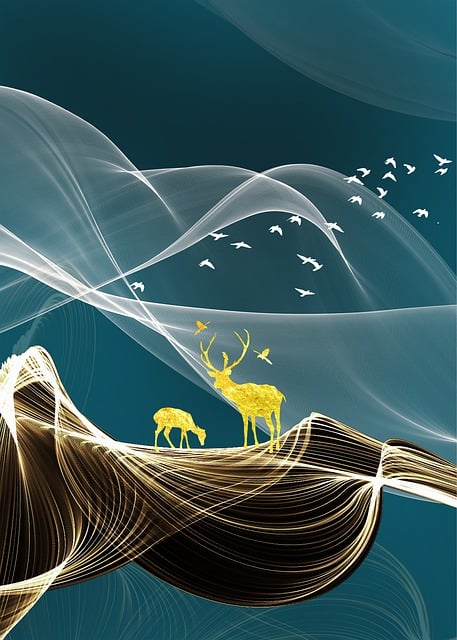
Appreciating Art and Its Impact
Art is all around us, and understanding its values and phases helps us feel the debt of gratitude. How can we summarize why craft is important and what it means to us?
- Size and Dimensions
Art makes our reality more dramatic. Experts use tone, shape, and surface to create objects that are satisfying to explore. They use their creative minds and innovation to create unique and special crafts.
- Expression and emotion
Art is a way for experts to put themselves out there. They can express their feelings, thoughts and ideas through their sculptures. Art helps us understand the feelings and experiences of others.
- Correspondence and Association
Art brings individuals together. This is common language that anyone can understand. Through crafts we can share stories, customs, and beliefs. It helps us connect with individuals from different countries and foundations.
- Learning and development
Focusing on crafts helps us learn about history, culture, and society. We learn how craft has changed over time and what it tells us about the world. Creating business like that helps us grow. It also boosts our critical thinking, innovation and determination.
- Motivation and creative thinking
Imagination makes us see the world in new ways. Our creative mind kicks in and suddenly requires us to think. In the moment we see a striking image, it can inspire us to play our parts or explore our illusions.
- Health and healing
Art can affect the person in a restorative way. It can reduce stress, create psychological well-being, and provide an outlet for emotions. Artist therapy helps people adjust to challenges and express themselves.
- His association
The art reflects the characteristics, beliefs and customs of different countries. By focusing on the craftsmanship of the world, we can better understand social processes. It shows us compassion and respect for other ideas.
After all, crafts improve our lives in many ways. Whether we create our own craft or value the craft of others, craft profoundly affects our emotions, thoughts, and relationships. By understanding the values and aspects of the craft, we can develop our appreciation and become more involved in the quality of the craft.(art and design)
Activities to Practice Art Principles and Elements
Exercises for learning craft standards and elements
Using craft standards and materials is foolproof and helps you improve as an artist. Here are a few straightforward exercises to try. (art and design)
- Drawing
Just draw with lines. Use straight, bent, and horizontal lines. Try to label ideas and examples. This helps to understand how fibers can form shapes and surfaces.
- Mixtures
Use different colors to blend tones. Start with important tones: red, blue and yellow. mix them and create new species. Mix red, blue, blue, yellow, purple or yellow and see what happens. This helps you learn about relationships between different people.
- Great Montage
Remove shapes from the shaded paper. Use a circle, square, or rectangle, that’s just the tip of the iceberg. Arrange them on clear paper for copying. This helps you understand how different concepts can work together to create an overall picture.
- Surface friction
Grab some paper and colored pencils. Apply paper to a variety of finished products, such as labels, stamps, or prints. Rub a colored pencil over the paper to hold its surface. This helps you explore how different pages can be paged in your particular article.
- Space and equality
Draw a straightforward concept such as an entertainment center or room. Think about using space and balance. Position objects evenly for the image. Use positive space for the highlights and negative space for the base. This helps you find your balance and coordination.
- Image Contrast
Make a more distinctive fabric. Use smaller muscles close together. For example, create a stunning red sun in a hazy blue sky. This helps you see how different parts of your design can see the differences.
- Theoretical Construction
Draw a pattern using hashed shapes, lines, or various others. Use a knife to make patterns with circular lines, or make patterns in different directions. Rehash the example and fill the entire page. This helps you understand how patterns can create focus and cohesion in the workplace.
- Harmony of accents and points
Draw an unambiguous symmetrical picture. Pick one part of your picture and it matters. Use bright stars or subtle constellations to extinguish. This helps you learn how to use the language to guide the audience’s thinking.
- Natural Resources
Go outside and look for regular objects like leaves, flowers, or compasses. It can be used to create works of art. You can schedule it for an outline or use it as inspiration for an image. This helps you appreciate the majesty of nature in your image.
- Storytelling through gestures
Draw a picture that repeats the story. Consider the first, the next, and the last. Use performance and component standards to make your story meaningful. This helps us work to craft to express ideas.
This exercise is a unique way to learn and discuss different aspects of values and art. Have a great time and explore the different products and options. The more you practice, the better you basically will be! (art and design)
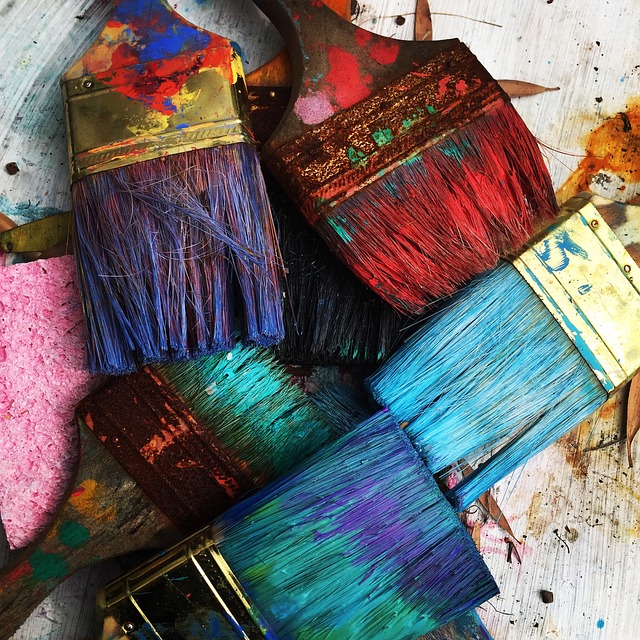
Resources for Learning More About Art Principles and Elements
There are many assets to help you go deeper into performance standards and features. Here are some simple ways to analyze a lot of data.
- Art Books
Go to your local library or library and look for books on crafting. Look for books that make sense of standards and products in the industry with pictures and examples. A few books suitable for beginners include “The Usborne Book of Workmanship” and “Drawing for Youngsters.”
- Art courses
Take craft classes at school or in the community. Art teachers can show you the best way to incorporate values and elements into your art. Courses give you the opportunity to learn and benefit others.
- Exhibits and displays
Visit craft galleries and exhibits to get a closer look at the masterpieces. Explore values and elements on different canvases, models, and pieces. Many exhibits have projects and excursions by young people to help you learn more.
- Recordings available on the Internet
Look for recordings on crafting on sites like YouTube. In many ways in drawing, painting, and other craft techniques. Look for records that make sense of the values and features of the craft. A few worthy songs are “Art and Focus on Youth” and “Simple Picture Guides.”
- Craft areas
Go to places with examples and exercises related to crafts. A few websites have games and activities that tell you the values and features. Some great youth programs for youngsters include “Work Art Programs for Youth” and “KidzArt.”
- Use of art
Download apps on your tablet or phone that help you learn about crafts. Activities include drawing tutorial exercises, mix-up games, and other fun exercises. Try applications like “Drawing Work Area” and “ColorFy”.
- Journal of the Arts
Read magazines that focus on crafts and innovation. A few magazines have strategies and bits of advice for young professionals. Look for magazines like “Features” and “Public Geographic Children.”
- Industrial Utilities
Visit craft stores and find supplies and equipment for your projects. Many stores have staff who can give you instructions on what to use. A few shops offer similar studios and shows.
- The Arts Group
Join a craft club at school or in the community. Craft projects are a wonderful way to meet a variety of craft-loving kids. You can share your work, get feedback, and learn new techniques together. (art and design)
Tips for Applying Art Principles and Elements in Your Work
Incorporating craft standards and elements into your work makes it more beautiful and appealing. Here are a few tips to help you implement it.
- Start with the basics
Start with basics and characters. Use circles, squares, and rectangles. Basic materials help you organize your art.
- Use a sketch.
Map out your ideas first. Draw neatly with a pencil. This helps you choose where all of that goes.
- Find ways to communicate with voice.
I try different varieties to see what looks the best. Mix tone to get new shades. Use the variation wheel to find matching colors.
- Add Surface
Use different devices to create pages. Take a stab at using erasers, brushes and even your fingers. The top one really makes your image look appealing.
- Balance your schedule
Make the oppositions equal in your art. If one side feels heavy, add something to the opposite side. Balance encourages your primary activity.
- Make the difference
Use short and slow lines together. Put the larger ones closer to the smaller ones. The contrast allows parts of your image to face outward.
- Make examples
Illustrate the types of letters, shapes, or objects that you will repeat. The designs will make your art look cohesive and interesting.
- The center around the point of convergence
Pick one aspect of your art and it matters. Set aside in grand varieties or fine piles. This catches the viewer’s attention.
- The concept of space
Use positive area for main figures and negative space for base. Go blank to make your art more disturbing.
10. Use Cadence
Make some adjustments to improve the sound and recreate features. This will show evolution and energize your masterpiece.
11. Keep tying yourself up
Make sure all the pieces of your artwork work together. Use transitions, shapes, or comparable lines to create harmony. Unity makes your art look complete.
12. Use it often
The more you practice, the more you improve. Try new methods and ideas. Study helps you work on your potential.
13. Try other crafts
Focus on your favorite art form. Note the use of values and features. Different artists benefit.
14. Know Input
Show your artwork to your loved ones. Ask for their opinion. Criticism helps you see your work differently.
15. Have fun
Look at how you work. Try not to worry too much by giving it a boost. Some good times help you stay sane.
If you follow these tips, you can create masterpieces with the art values and elements. Keep learning and experimenting, and your feature will keep improving! (Art and design)
(art and design) (art and design) (art and design) (art and design) (art and design) (art and design) (art and design)